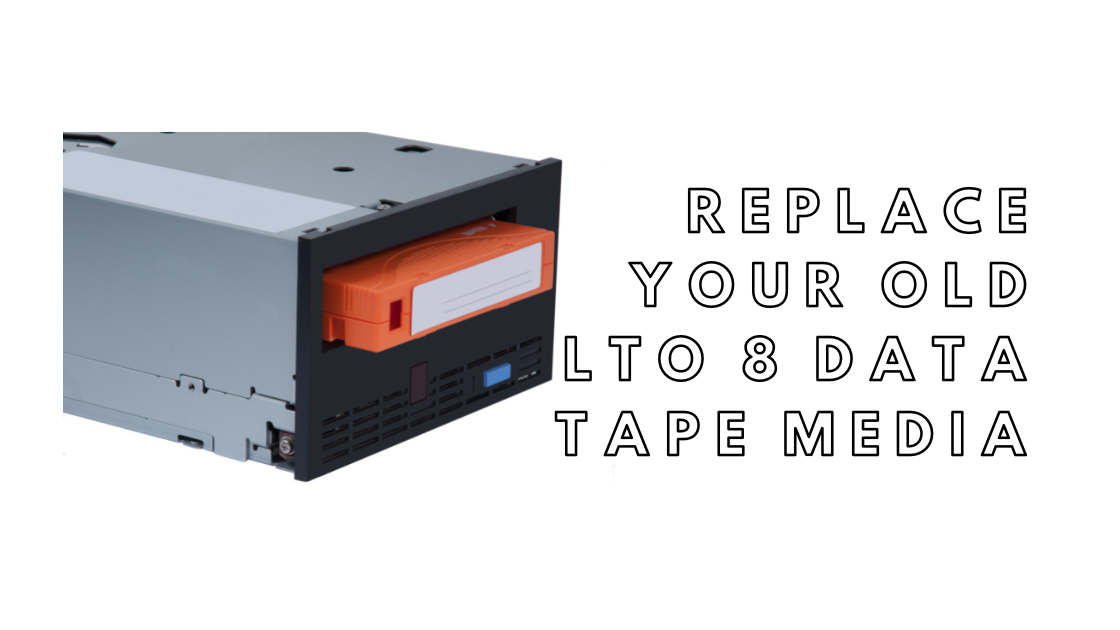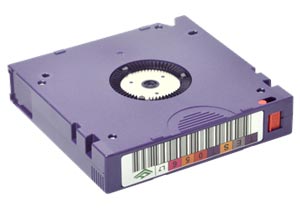How to Safely Replace Your Old LTO 8 Data Tape Media?

As technology advances, it’s essential to keep up with the times and replace your old data tapes.
Here are some tips on how to safely replace your old LTO 8 data tapes – backup all of your files before beginning, create an inventory of what tapes you are replacing and label the new tapes accordingly, and test the new tapes before finalizing the replacement process and finally, archive your old tapes.
Backing Up Your Files
When selling your old data tapes and buying the new LTO 8 ones, the first and most crucial step is backing up all of your files. This will ensure that you have a copy of everything in case something goes wrong during the process. There are a few different ways to backup your files, and we’ll go over them here.
The first option for backing up your data is to use an external hard drive. This physical storage device plugs into your computer and allows you to save files directly onto it. The advantage of using an external hard drive is that it’s quick and easy to use. The downside is that the external hard drive will likely be damaged if your computer crashes or is damaged.
Another option for backing up your data is to use cloud storage. This stores your files on a remote server, which can be accessed from anywhere with an internet connection.
The advantage of cloud storage is that it’s much more secure than an external hard drive, as the data is stored off-site. The downside is that it can be slower to access your files, as you have to download them from the server.
Creating an Inventory
Once you have backed up all of your files, the next step is to create an inventory of what LTO 8 tapes you are replacing. This will help you keep track of which tapes are new and which ones are old. It is also a good idea to label the new tapes accordingly. This will make it easier to find the right tape when you need it.
Here’s a step-by-step guide on how to create an inventory of your LTO 8 tapes.
- Step 1: Gather all of your LTO 8 tapes and place them in one location.
- Step 2: Create a spreadsheet or document with the following columns: Tape Number, Description, Date Imported, and Location.
- Step 3: Fill in the Tape Number column with the numbers from each tape. If a tape doesn’t have a number, note that in the Description column.
- Step 4: In the Description column, include a brief description of each tape. For example, “June backup,” “Full site backup,” or “User data backup.”
- Step 5: In the Date Imported column, note when each tape was created or imported. If you don’t have this information, leave the column blank.
- Step 6: Include where each tape is stored in the Location column. This is helpful if you have multiple storage locations or if you plan on moving the tapes to another location in the future.
- Step 7: Save your spreadsheet or document in a safe place and make sure it is backed up.
Tip: You can also include other information in your inventory, such as who created the tape or what type of data is stored on it. However, including this information is not required.

Testing the New Tapes
When you’ve finally decided to replace your old tapes, it’s essential to not just throw away the old ones. You need to test the new tapes to ensure that they’re working and you can access your data. Here’s a guide on how to go about testing your new tapes.
The first step is to check for errors. You can restore backups from your backup system onto the new tapes. If you see any errors, there’s a problem with the tape itself, and you should get a new one.
Next, you want to verify that written backups can be read back without any errors. This step is crucial because it ensures that the data you’ve written onto the tape can be accessed and used. The tape is essentially useless if you can’t read back the data.
Testing your new tapes is an essential step in the replacement process. By taking the time to do this, you can be sure that you’re getting a functional product that will serve your needs. Plus, it’ll give you peace of mind knowing that your data is safe and accessible.
Archiving Your Old Tapes
You can archive your old tapes in a few different ways, such as storing them in a cool, dry place or using a tape library system. Storing them in a cool, dry place is the easiest and most cost-effective method, but it does have some risks. Your tapes could be damaged by heat, moisture, or regular wear and tear over time.
A tape library system is more expensive, but it’s much safer. Tape library systems store your tapes in special cases that protect them from the elements and keep them clean. They also track where each tape is so you can easily find it again if you need to.
Tape library systems store your tapes in special cases that protect them from the elements and keep them clean. This is important because even a tiny amount of dirt or dust can cause problems with the tape’s playback quality.
Additionally, exposure to extreme temperatures and humidity can damage tapes irreparably. By keeping your tapes in a tape library system, you can be sure they will be well-protected from any potential damage.
Another advantage of tape library systems is that they track each tape’s location. This is important because it can be very difficult to find a specific tape if you don’t know where it is. With a tape library system, you can rest assured knowing that each tape is in its proper place and can easily be retrieved if needed.
In addition to keeping your tapes clean and organized, tape library systems offer added security for your data. This is because most tape library systems require authentication before allowing access to the tapes. Only authorized individuals can view or modify your data, which helps protect it from accidental or malicious changes.
Conclusion
Following these steps, you can safely replace your old LTO 8 Tape Media without losing essential data. Remember to back up all of your files before beginning, create an inventory of what tapes you are replacing and label the new tapes accordingly, test the new tapes before finalizing the replacement process, and finally, archive your old tape.




